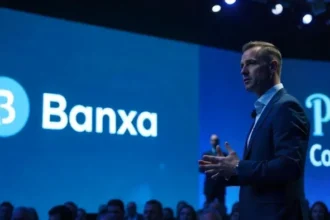How $10 a Month Per User Could Revolutionize the Pi Network
What is the Community-Driven Liquidity Pool (CDLP)?
A Decentralized Way to Stabilize Pi Network
CDLP is a bold new initiative created by the Pi Network community to improve stability and reduce market volatility. It proposes that users contribute a small, consistent amount—roughly $10 worth of Pi—each month using a method called Dollar-Cost Averaging (DCA). Unlike centralized systems, your contribution stays in your wallet. No third parties. No middlemen. Complete transparency and user control.
Why Just $10 Matters: The Power of Collective Action
Millions Contributing Small Adds Up Big
If 10 million Pioneers each contribute $10 monthly, the Pi ecosystem would receive $100 million in community-driven liquidity. That’s a level of financial input capable of reducing sharp drops, absorbing sell pressure, and making Pi more appealing to developers and merchants.
“Dollar-Cost Averaging + Long-Term Holding = Market Stability.”
This could ultimately bring Pi closer to mass adoption by creating a healthier and less volatile price structure.
How CDLP Could Fuel Ecosystem Growth
Benefits for Builders, Users, and Businesses
- Developers gain a more stable environment to create decentralized apps (dApps).
- Merchants see price reliability, making Pi a viable payment method.
- Long-term holders benefit from future rewards, staking, or DeFi opportunities.
This model isn’t about overnight riches—it’s about building a sustainable, decentralized economy over time.
Transparency + Security = Trust
No Central Wallet, No Risky Intermediaries
CDLP stands out because tokens remain in personal wallets, never pooled in a central account. That reduces third-party risk and aligns perfectly with crypto’s core value: decentralization.
Users retain full control, which ensures a trust-based model that grows through consensus, not control.
Satoshi Nakamoto’s Tweet That Sparked It All
A Pi community member—using the pseudonym Satoshi Nakamoto—tweeted a concept that went viral on April 6, 2025:
“Dollar-Cost Averaging into Pi every month could stabilize prices and create a sustainable economy. $10 a month from each Pioneer can build the future.”
This sparked thousands of responses and discussions, setting the stage for a community-wide movement.
India, China, and the Coming Wave of Demand
Seasonal buying patterns—especially in countries like India and China—could amplify the CDLP model’s effects. If paired with institutional interest and dApp expansion, Pi could become a leader in real-world crypto use.
The Long-Term Vision: 2030 and Beyond
If CDLP takes root, we’re looking at:
- Increased price stability for Pi.
- Higher developer activity.
- Better merchant integration.
- Stronger investor sentiment.
- Real-world use cases supported by real users.
This model of Buy Together. Hold Together. Build Together. could turn Pi into one of the most community-backed digital assets globally.
❓ Frequently Asked Questions (FAQ)
🔹 What is the CDLP in Pi Network?
The Community-Driven Liquidity Pool (CDLP) is a decentralized strategy encouraging users to invest around $10 monthly into Pi. It boosts liquidity and stabilizes prices through consistent contributions.
🔹 Is my Pi safe in CDLP?
Yes. Your Pi stays in your wallet. No one else holds it, which means zero third-party risk.
🔹 How does this help Pi’s price?
Steady, community-backed contributions prevent big sell-offs from tanking the price. Over time, this could make Pi more stable and appealing to users and businesses.
🔹 Can businesses benefit from this model?
Absolutely. Price stability encourages more businesses to accept Pi for payments, fostering adoption and growth.
🔹 How do I participate in CDLP?
Simply set aside $10 of Pi each month in your wallet using Dollar-Cost Averaging. No app or intermediary is required.
⚠️ Disclaimer
This content is for informational purposes only and does not constitute financial advice. Cryptocurrency investments carry risks, including market volatility and potential loss of capital. Always conduct your own research or consult with a licensed financial advisor before making investment decisions. The Pi Network is currently in its test phases, and market value is speculative until mainnet and exchange listings are officially confirmed.



